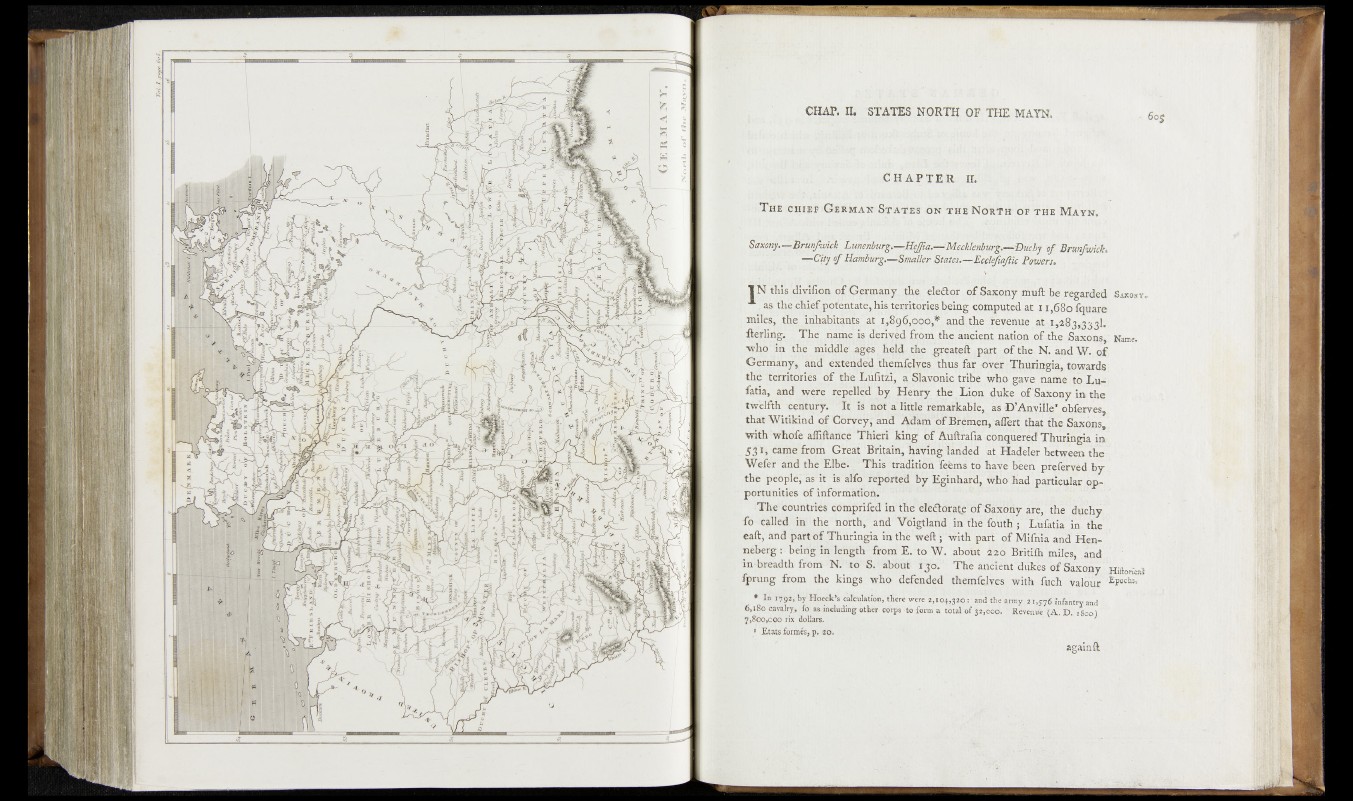
CHAPTER II.
T he eitrEE G erman* Sta t e s on the North oe the Mayn.
Saxony.^^runfwkk^Lyj^enburg.—f l ^ a .— MècËenbürg^'Buchy if'BrunfwicL
^ ~—City of Hambhrg.^SmMen ^States,— Eckftaflc Polvers.
I N thîs ldivifiojçt of Germany the çleâor of Saxony-muft be regarded Saxokv.
, a$ thq chief.pofentatç^hiate^itorje^ being cpmp^ted at 1,1,680 fquaré
, miles, the^irihabitants at i^8^gig0u*,and,]the revenue at* 1,283,3331.;
fterlihg.' The (name is deriyéd frqm the auciept natipn of the Saxons» Name.
whóf'in middle" ages held,- the ,greateft ^part.^of the N. and W. of,
Germany^ and extended tKemfelves thus far over Thuringia, towards'
the territories of the Lufità^ 'a Slavonic'tribe whoTgave name to Lu-
fatia, and were repelled) by Henry the Lion duke ofSa&ony in the
twelfth -century. It & hpf‘a little remarkable, as'D’Ànyiîlé^ obferves,
that Witikind of Corvey, and Adam of Brémen, aflert that thé Saxqns,
with wbofe affiftance Thieri king of Auffraha conquered Thuringia in
5 p i came from Great Britain, haying landed at Hadeler between the
Wefer and the'Elbe. This tracfitiön fe^ms to have been preferred by
the people^ as it is alfo reported by Eginhard, Who had particular opportunities
of information.: -
-The^ountries comprifed in the eledorate’of'Saxony “are/ the duchy
fo called in the north, and V'digtland m^ë*fouth'; Lufatia/In the
eaft, and part of Thuringia in the weft ; with pari'' of’lfàïfiïia âncf Hen-
neberg : beiiig ifrlehgth from Ë. to W. abotit 2,2 a BntHh’miles!, and
indueadth frfcm N. ftórS. about îSÉjj The'àn£^ty(îiikes “öf Saxony ' ^ ftni-rwt
fprung from the kings who defended themfel||4 with fuch valour '£Pochs*
* In 1792, by H a ck ’s calculation, tfiérè were 2,'104)320; S S p h earmyi3u è f 6 % ^r,fZ ^ 4
€,i8o cavalry, m as including «her corps to form a tbtal’of Reven* tA, D. 1800)
7,800,coo rix dollars.
1 Etats formés, p, 20.
againft